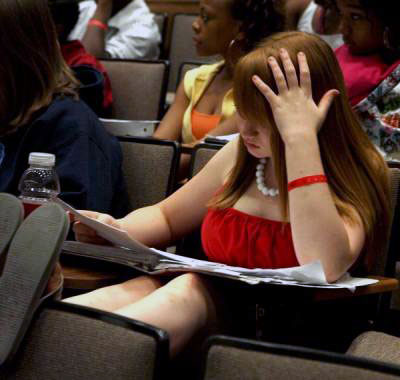All Nonfiction
- Bullying
- Books
- Academic
- Author Interviews
- Celebrity interviews
- College Articles
- College Essays
- Educator of the Year
- Heroes
- Interviews
- Memoir
- Personal Experience
- Sports
- Travel & Culture
All Opinions
- Bullying
- Current Events / Politics
- Discrimination
- Drugs / Alcohol / Smoking
- Entertainment / Celebrities
- Environment
- Love / Relationships
- Movies / Music / TV
- Pop Culture / Trends
- School / College
- Social Issues / Civics
- Spirituality / Religion
- Sports / Hobbies
All Hot Topics
- Bullying
- Community Service
- Environment
- Health
- Letters to the Editor
- Pride & Prejudice
- What Matters
- Back
Summer Guide
- Program Links
- Program Reviews
- Back
College Guide
- College Links
- College Reviews
- College Essays
- College Articles
- Back
Painting the Roses White
“New Racism” is a less direct and harder to discern form of racism that begins to form in childhood. Mostly, this comes from picking up on the subtle racial biases that childrens’ parents hold. The hardest part of getting rid of this form of racism is that it is usually so subtle it’s difficult to recognize. By introducing a kind of education plan into schools that embraces the differences in speech between races, minorities begin schooling feeling less excluded, and children in the majority feel less of a sense of false superiority (Kohli). Elementary schools should integrate Ebonics into their education because it is the best way to battle "New Racism".
Less than one year ago, a nine year old named McKenzie Adams hanged herself after being bullied by her classmates for being “ugly” and “black”. In a time where everything down to the actual definition of racism is questioned, it’s important to recognize racism where it is. As American journalist Matthew Yglesias stated, even the current President “sees nonwhite Americans as not genuinely American, as possessing a kind of inherent foreignness regardless of where they were born”(Yglesias). When a political figure of that stature views having darker skin as lessening a right to citizenship, recognizing a separate language becomes a much more difficult goal to accomplish.
In the painting, there is a little girl who is African American sitting in a blue dress. A light skinned hand reaches toward her, painting her face white.
This painting demonstrates the push to ignore color by making young African American children speak and act “white”. Before even fine tuning their motor skills, children have been sorted into either “majority” or “minority”. By rejecting the statement that Black American’s have their own form of English, they’re being told that even the most basic thing they’ve ever learned-spoken language-is inferior. The first step in accepting this is to recognize Ebonics is not simply the alteration of a couple of words, but has its own rules. For example, double negatives, or negative inversions, are routinely used. Instead of saying “Nobody can”, which is the standard English, the phrase would become “Nobody can’t”. Another common example is the use of the verb “to be” and the conjugation “bin” that is used in place of “has been”.
Every individual can assist in reducing racism in the world by accepting Ebonics as a separate language and not “wrong” or “slang”. It is the way that parents think and act that determines how children think and act (Rickford). This then translates to how they treat others. For parents, and not only children and teens to accept this, there begins a new pattern of acceptance and true integration. It’s vitally important to cut off racism at the root and end the cycle by changing a small aspect of people’s perspectives.
Works Cited
Friedersdorf, Conor. “When Using Racist, Define Your Terms”. July 25, 2019. The Atlantic.
Kohli, Rita. “The “New Racism” of K–12 Schools: Centering Critical Research on Racism”
Rickford, John R.“What is Ebonics (African American English)?”

Similar Articles
JOIN THE DISCUSSION
This article has 0 comments.
